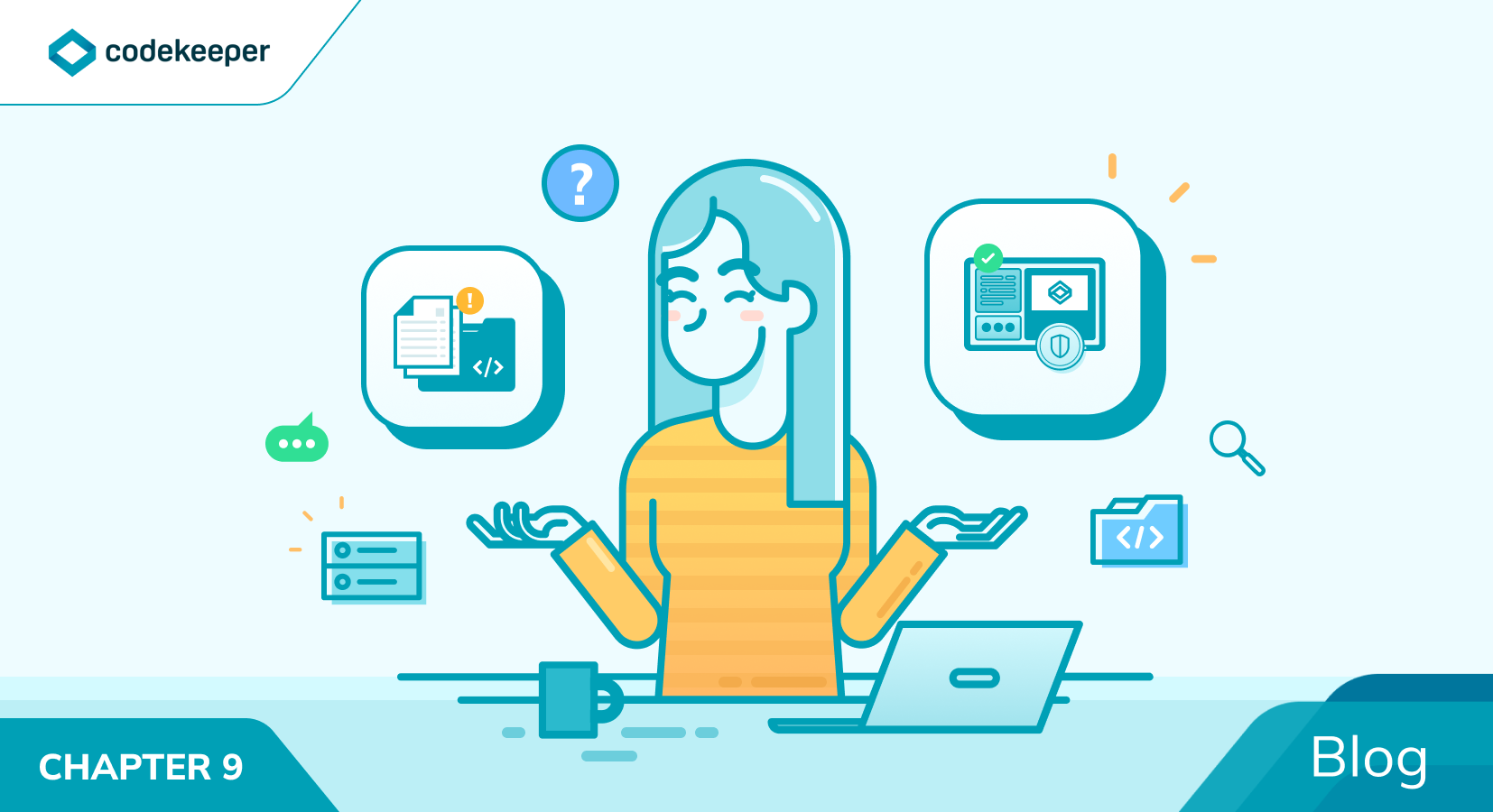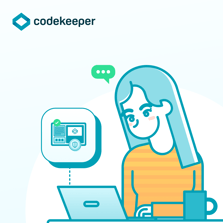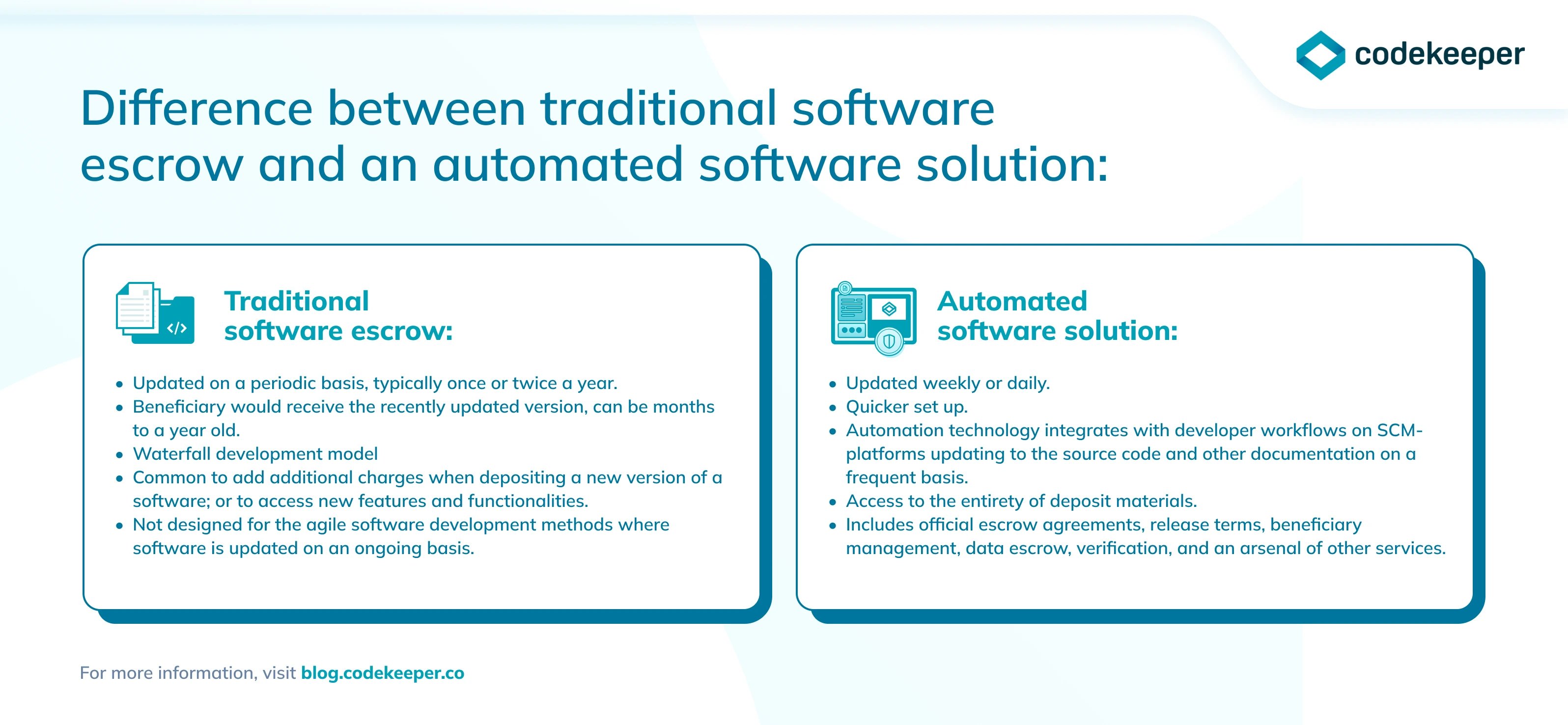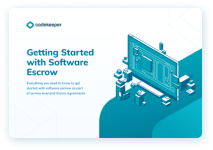The Ultimate Guide to Software and Source Code Escrow - Chapter 9
What would be the best choice for you; a more traditional source code escrow or an automated solution?

By Content Team
Table of contents:
How do I choose the right software escrow?
What would be the best choice for you; a more traditional source code escrow or an automated solution. In this chapter we will go over both and their unique properties so you can choose the right one for you.
A more traditional source code escrow service was originally intended for a traditional software product, which is different from today’s software in many ways, but most significantly in that it is downloaded to hardware and updated on a periodic, scheduled basis — typically once or twice a year
This frequency was enough back in the day because the actual source code only really changed one to two times per year. So if a beneficiary was eligible for an escrow release, they were likely to get the most recent source code.
Traditional escrow agents tend to employ the waterfall development model, which is a “far less iterative and flexible approach, as progress flows in largely one direction ("downwards" like a waterfall) through the phases of conception, initiation, analysis, design, construction, testing, deployment and maintenance.”
Besides being less iterative and flexible, as a more labor-intensive solution, this approach is also much slower and significantly more expensive. This is especially true when a traditional escrow provider takes on SaaS companies as clients, who innately have greater needs — especially in terms of ongoing updates. This means the escrow agent has to perform more services and dedicate more resources and workers to meeting their SaaS customers’ needs.
One way in which this manifests is with deposits. It’s not uncommon to see considerable additional charges for licensors whenever it’s necessary to deposit a new version of a software; or for end-users, whenever they need to access new features and functionalities.
In the same vein, the backup and storage of data are not likely to be addressed in a traditional source code escrow agreement. Having access to the most up-to-date source code, as well as all accompanying materials and data necessary for a successful recovery, is a prerequisite to a successful software escrow relationship. From the perspective of the end-user, this is an absolute must-have for any source code escrow agreement today.
Needless to say, traditional software escrow solutions were not designed for the agile software development methods that we see in SaaS environments today, where software is updated on an ongoing basis. Should the software supplier or the customer ever need to rely on the source code being up-to-date, a traditional solution would typically not be the most effective way of escrowing software.
How's an automated software solution better?
 A new, “agile” approach to software development is being employed across virtually all software companies that want to become and stay competitive, including SaaS companies.
A new, “agile” approach to software development is being employed across virtually all software companies that want to become and stay competitive, including SaaS companies.
This approach is, in many ways, changing the world through innovation, and it has also dramatically impacted how software escrow services are delivered and maintained to ensure relevance and value.
Outdated software escrow solutions have been evolving very slowly alongside developer workflows. And with source code now being updated frequently—weekly or even daily—most of them are no longer able to keep up with today’s pace of innovation.
In contrast to traditional software escrow solutions, which virtually guarantee your source code and other deposit materials will be outdated should you need them, a modern software escrow service, such as Codekeeper, was built around the needs of the modern developer. We know that setting up a source code escrow can seem daunting, especially when it's new to an organization, so our mission here at Codekeeper is to make this process as seamless as possible for your organization.
With the help of powerful automation technology, Codekeeper seamlessly integrates with developer workflows on SCM-platforms like Github, Bitbucket, Gitlab, and others, allowing it to sweep for updates to the source code and other documentation on a frequent basis. This continuous updating of deposit materials not only removes the unnecessary burden of making manual deposits, but it also ensures that your materials are always up-to-date and of a high level of quality — while simultaneously helping you streamline your workflow and save time.
Companies such as Snapchat, Intuit, GE, Pepsico, Nestlé, P&G, and Daimler use Codekeeper to significantly cut their costs and optimize their software escrow processes. Thanks to our cutting-edge automation technology, our clients get a higher level of service and uninterrupted access to the entirety of deposit materials for a considerably lower price than with traditional escrow agents.
Codekeeper ensures that our clients have reliably up-to-date source code deposits, but it also includes official escrow agreements, release terms, beneficiary management, data escrow, verification, and an arsenal of other services. Such a modern solution is more likely to be a good fit for modern software companies.


This article is part of the FREE Ebook:
The Ultimate Guide to Software and Source Code Escrow
Do you want to be the first one to know when the Ebook is published? Subscribe to our newsletter here .



